The Golden Scalycaps are very noticeable mushrooms with their golden yellow colours. They are fairly common growing in tufts on live and felled trees. Accurate identification to species is difficult and their edibility is largely disputed, so we can’t recommend them.
Home / Mushroom Guide /
Golden Scalycap
Golden Scalycap
| Mushroom Type | |
| Common Names |
Golden Scalycap (EN), Cap Cennog Euraidd (CY), Łuskwiak Złotawy (PL), Rozsdasárga Tőkegomba (HU) |
| Scientific Name |
Pholiota aurivella |
| Synonyms |
Pholiota cerifera |
| Season Start |
Apr |
| Season End |
Dec |
| Average Mushroom height (CM) |
5-20 |
| Average Cap width (CM) |
3-15 |
Please note that each and every mushroom you come across may vary in appearance to these photos.
Cap
Always sticky or slimy, golden yellow to orange rust in colour, covered with darker triangular scales.
Gills
Starting pale yellow, becoming pale brown and then rusty brown. The gills are crowded and adnate (attached to the stem) although often with a sinuous notch before joining the stem.
Cortina / Veil
Cream yellow cottony veil that soon disappears leaving a faint ring zone in the stem.
Flesh
Firm, pale yellow throughout. A bright yellow or rust staining can occur at the base of the stem.
Habitat
Grows in tufts from the wood of trees, both dead and alive. It has a strong preference for Beech.
Possible Confusion
Beginners could mistake a Scalycap for Honey Fungus (Armillaria mellea), pictured, but the cap, stem and skirt are different.
The Shaggy Scalycap (Pholiota squarrosa) is the most common and well known of the Scalycaps but it’s distinguished by a dry (not slimy) cap covered in shaggy upturned scales. This species is reported as toxic specially when consumed with alcohol.
There are a number of other Scalycap species with a slimy cap that can be difficult to distinguish, see “Other Facts” below for more info.
Spore Print
Brown, ellipsoid.
Taste / Smell
Mild, mushroomy and even slightly sweet.
We found no bitterness during our nibbling test.
This mushroom is not considered edible, we have not tried eating it and can’t recommended it for the pot.
Frequency
Common.
Other Facts
The Golden Scalycap is known to most seasoned mushroom hunters under the familiar name Pholiota aurivella. However recent studies by mycologists point that a number of similar species have been mislabeled with this name. This group remains unresolved and accurate distinction is difficult without using a microscope. Below are our findings according to more recently published guides, but things are still likely to change:
- Pholiota adiposa – very slimy cap, no membranous skirt, prefers Beech;
- Pholiota cerifera – less slimy, slightly membranous white skirt, darker scales in base of stem, prefers Willow;
- Pholiota limonella – very slimy cap, more appressed scales, grey olive gills when young, prefers Birch and Alder;
- Pholiota jahnii – darker, slimy cap with more thorny scales, veil remnants on the edge of the cap, often growing on the soil from buried roots or wood debris.
Pholiota adiposa has been reported as edible by some and in particular from China, however it is difficult to confirm if this refers to the same species, and some Scalycaps are reported as poisonous, so we can’t recommend anyone to try.



 (12 votes, average: 3.83 out of 5)
(12 votes, average: 3.83 out of 5)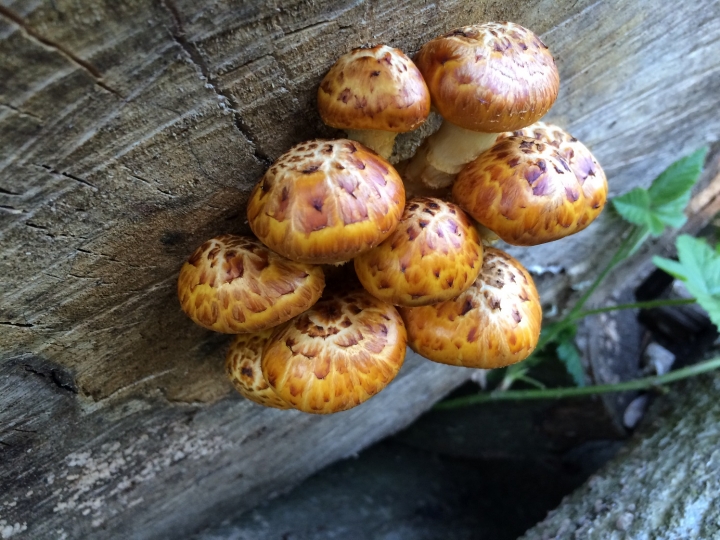
















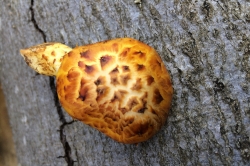
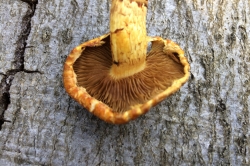
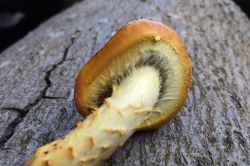
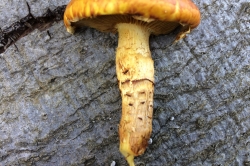
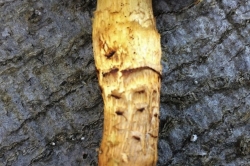
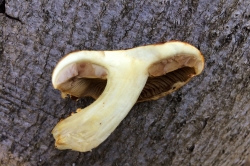
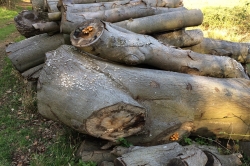
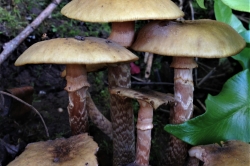






Leave a Reply